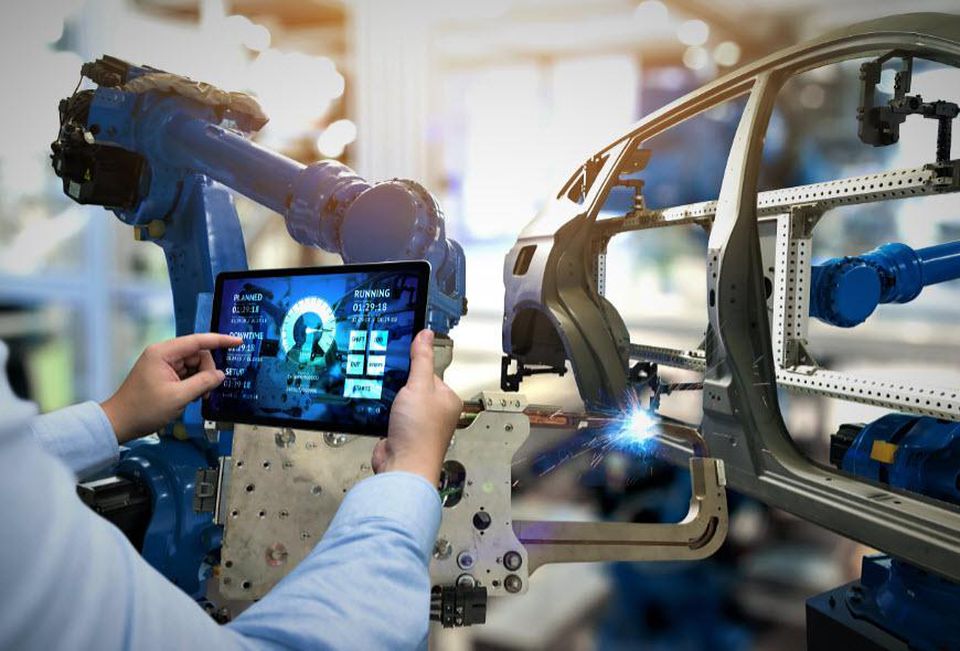How Agentic AI Can Transform the Supply Chain Function in Manufacturing
This blog explores how Agentic AI is revolutionizing manufacturing supply chains by enhancing efficiency, reducing downtime, improving decision-making, and enabling smarter automation across operations.

Table of Contents
- The Supply Chain Crossroads
- What Agentic AI Actually Means
- Why Supply Chains Need It
- How Agentic AI Fits Into the Supply Chain
- The Real-World Impact
- How to Get There
- What the Future Looks Like
The Supply Chain Crossroads
Manufacturing supply chains have always been complex, but right now they’re in survival mode. Disruptions are constant. Costs keep shifting. Demand is unpredictable. And most digital systems in use today still wait for humans to tell them what to do.
The truth is, most supply chains are automated, but not intelligent. They execute, but they don’t adapt. That’s the gap Agentic AI fills. It brings decision-making and action into the system itself. Instead of dashboards asking for human interpretation, you get intelligent agents that can sense what’s happening, decide what to do, and take action across your network.
This isn’t about replacing people. It’s about moving from slow, reactive management to systems that think and act in real time.
What Agentic AI Actually Means
Let’s strip the jargon. Agentic AI is a system of intelligent agents that can analyze data, reason through multiple steps, and collaborate with humans or other systems to get work done.
Picture a procurement agent that automatically renegotiates a supplier contract when commodity prices change. Or a logistics agent that reroutes containers when a port strike hits. Each agent works toward a goal, constantly learning and improving from outcomes.
Unlike predictive models that just forecast trends, these agents act on those insights. They make decisions. They execute tasks. And they can coordinate with other agents to get a broader outcome, like keeping a production line running despite disruption.
Why Supply Chains Need It
Even with all the digital transformation talk, supply chains in manufacturing still struggle with some basic, painful issues:
- Data silos everywhere. Every system speaks its own language.
- Decisions are reactive. Teams respond when things break instead of seeing problems coming.
- Forecasts go wrong. Volatile markets make planning a guessing game.
- Sustainability pressure is rising. ESG compliance, emissions tracking, and traceability add more data but not more clarity.
- Talent is stretched thin. The people running these systems are exhausted, and the skills needed to manage AI tools are in short supply.
Agentic AI thrives in this mess. It doesn’t need clean, perfect systems to start adding value. It learns to navigate them, find patterns, and act faster than any human can.
How Agentic AI Fits Into the Supply Chain
Procurement and Supplier Management
Procurement agents can continuously monitor supplier performance, price trends, and compliance issues. They don’t wait for quarterly reviews, they act on triggers in real time. If a raw material price is about to spike, the agent can automatically place an order or suggest an alternate supplier.
It’s like having a category manager who never sleeps, tracks every variable, and constantly optimizes for cost, quality, and reliability.
Production Planning and Scheduling
Manufacturing schedules rarely go as planned. Machines fail, labor shifts change, or new orders appear overnight. Agentic systems can reschedule production instantly, pulling data from maintenance logs and demand forecasts.
If one plant goes down, an agent can reassign jobs to another location, reroute materials, and adjust delivery timelines all before anyone has time to raise an escalation.
Logistics and Distribution
Logistics agents can talk to transport APIs, weather data, and inventory systems simultaneously. They adjust routes in real time and coordinate with warehouse agents to balance cost, capacity, and speed.
You move from “tracking problems after they happen” to “preventing them before they start.”
Demand Forecasting and Inventory
Demand signals are everywhere sales data, economic indicators, even social sentiment. Agents can digest all of it to keep inventory balanced and avoid overproduction.
When a spike is detected, they can trigger manufacturing adjustments or expedite shipping automatically. Over time, these systems learn which signals matter most and refine their own logic.
Risk and Compliance
Compliance doesn’t have to be manual anymore. Agents can scan supplier ESG data, monitor trade restrictions, and flag issues automatically. If a supplier’s sustainability score drops or a region faces sanctions, the system alerts the right team instantly or reroutes orders itself.
That means no more compliance surprises when your shipment is already stuck at customs.
The Real-World Impact
The business case isn’t theoretical. Companies that use AI in supply chain already report major gains faster decisions, fewer errors, and stronger resilience when disruptions hit.
Agentic AI amplifies those gains because it closes the loop between insight and action.
- Speed: Decisions happen in seconds, not meetings.
- Cost: Less waste, fewer stockouts, and optimized freight.
- Resilience: Disruptions are anticipated, not reacted to.
- Sustainability: Lower carbon footprint through smarter routing and sourcing.
- Scalability: Systems improve continuously without adding more people.
Think of it as building muscle memory into your operations. The more your agents run, the smarter they get.
How to Get There
You don’t need to reinvent your tech stack. You need to make it more intelligent.
1. Start with Data and Visibility
Unify data from ERP, MES, CRM, and logistics tools into a single view. That’s your digital twin the sandbox where agents can operate safely and learn.
2. Begin with Semi-Autonomous Agents
Let AI recommend actions that humans approve. For example, reorder suggestions, supplier risk alerts, or schedule changes.
3. Expand Autonomy Where It Works
Once trust is built, move to fully autonomous execution for specific functions like route optimization or inventory balancing.
4. Enable Cross-Functional Collaboration
Deploy multiple agents that talk to each other procurement to logistics, logistics to production, and so on. That’s where compounding value appears.
Always keep humans in the loop. The goal is augmentation, not replacement. With explainable AI and audit logs, teams can understand every decision made.
What the Future Looks Like
Over time, these systems won’t stop at company borders. Agents from different organizations, manufacturers, suppliers, logistics partners will interact across secure networks.
A production agent could automatically negotiate with a supplier’s inventory agent or a logistics agent could optimize routes across multiple vendors. That’s a truly autonomous supply ecosystem where intelligence flows through the entire value chain. It’s not science fiction. The tech already exists. The question is who adapts first.
Ready to see how Agentic AI can fit into your supply chain strategy?Let’s talk. Schedule a discovery session with our AI transformation team at Intellectyx and explore what an autonomous, data-driven supply chain could look like for your business.
Related Articles
Get top Insights and news from our technology experts.
Delivered to you monthly, straight to your inbox.



